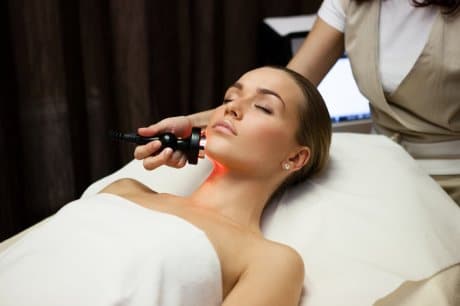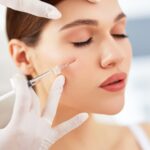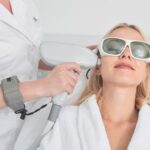
For millions worldwide, medical spas have become part of their routine, like visiting a dentist. As a result, there have been massive changes in the med spa and wellness industries.
Nowadays, people prefer to get their facelifts and other non-invasive procedures done in medical spas.
Going into 2023, every med spa owner and medical professional needs to know these essential medical spa industry statistics.
Size and Growth of the Industry
The industry of medical spas is experiencing its peak period right now. After its humble beginnings in the 1990s, the popularity of med spas and treatments provided at these locations has skyrocketed in the past decade. So, let’s examine the market size, its growth in the US, and the revenue this industry generates.
The global medical spa market is valued at $16.4 billion.
(Grand View Research)
The medical spa industry statistics for 2023 reveal that the value of this market is at an all-time high. Consumers are aware of wellness trends and anti-aging services these facilities provide, attributing to constant market growth. Wellness tourism has additionally become a significant contributing factor to the development of this industry, as people are willing to travel across the country – or even the globe – to get treatment at a med spa.
The US contributes the most to the global market, with $5.6 billion.
(Grand View Research)
It is no surprise that the United States continues to be the epicenter of this industry. The beauty treatments provided at med spas have always been popular, and Americans were usually the first to embrace visiting spas for various medical treatments.
There are 8,841 registered medical spas in the US.
(American Med Spa Association)
Continuing on from the previous data about the medical spa market size in the US, the number of medical spas is constantly growing, following the market demand. According to the data from 2022, there are nearly 9,000 spas across the country. Compared to the data from the year before, when there were 7,430 spas, the year-on-year growth is around 20%. Impressive, to say the least.
Non-surgeons own 63% of medical spas.
(American Med Spa Association)
Most medical spas in the United States are registered as small businesses, usually owned by a single person. What’s interesting, though, is that the owners typically aren’t physicians or surgeons themselves; the medical practitioners don’t have the core ownership of the facility. But, medical spas still have to appoint medical personnel and licensed healthcare professionals to perform the procedures.
The med spa industry employs over 70,000 people.
(American Med Spa Association)
This industry is constantly creating new jobs for medically trained personnel. With so many medical spas nationwide, the demand for experienced employees is growing. As for the salaries, they range from $80,348 to $120,691 for full-time employees.
On average, a med spa generates $121,623 in monthly revenue.
(American Med Spa Association)
Another trend directly tied to the industry’s growth is the revenue of medical spas. It has been steadily rising these past years, and in 2023, a med spa typically earns $1.9 million annually. Considering how many med spas are in the US, the competition has benefited everyone involved in this industry.
Per visit, patients spend $536 at medical spas.
(American Med Spa Association)
Patients are also spending more on medical spa treatments. During the pandemic years (2020-2022), the amount patients spent per visit grew by roughly 20%. On average, a medical spa gets 283 non-surgical visits a month, which, considering the average spend, translates to the average med spa revenue mentioned above.
Demographics of Medical Spa Customers
Now we will delve into the latest statistics and trends on medical spa customers, including their gender, age, and patient retention rates.
Men account for only 12% of med spa patients.
(American Med Spa Association)
Analysts predicted that the percentage of men visiting med spas would increase. However, we have seen no change in trends in recent years. Even though certain procedures cater to men now, women still make up the majority of med spa patients.
78% of med spa patients are under 55 years old.
(American Med Spa Association)
So, we’ve already established that the average med spa patient is female. Also, most patients are 54 or younger, with the majority aged 35-54. Here’s what the medical spa statistics look like based on the patient’s age:
• 18–34 years old: 26% of female patients.
• 35–54 years old: 52% of female patients.
• 55 or older: 21% of female patients.
65% of patients return to the same spa for further treatments.
(American Med Spa Association)
Patient retention is exceptionally high, another factor in the industry’s growth. Over the past years, the percentage of patients who return to a med spa for another treatment has sat at 65-66%. This has allowed med spa owners to rely on a steady income, and have predictable revenue throughout the year.
Popular Services and Treatments
The market might be growing steadily, but medical spa trends are constantly shifting. What used to be the most popular procedure last year can easily be forgotten because another product or procedure has taken over the market. In this section, we’ll look at the trends that dominate the industry today.
94% of medical spas offer facial injectables.
(American Med Spa Association)
Dermal fillers have become all the rage for a facelift. The manufacturers constantly compete, offering better prices and longer-lasting effects. Since the procedure is quick, visiting a med spa to get a Belotero treatment, Bellafill, or Juvederm injection has become incredibly popular. Nearly all med spas offer them.
Chemical peels are the most popular medical spa service, accounting for 85% of all treatments.
(American Med Spa Association)
Skin treatments are the leading reason people visit med spas, and they’re what most consider the main service of such facilities. But medical spas also offer Botox injections, dermal fillers, Belotero, laser hair removal, and treatments using Intense-pulsed light (IPL) technology, to name a few.
These are the top 10 medical spa treatments, according to the medical spa global market research:
1. Chemical peels
2. Aesthetician services
3. Botox and filler injections
4. Microdermabrasion
5. Photo-facial pulsed light (IPL)
6. Skin tightening
7. Body contouring
8. Laser skin resurfacing
9. Medical consultations with licensed MD
10. Radiofrequency
Future Outlook
For med spa owners, the future is bright. As we’ve already seen, the demand for spas and their services is increasing, and the market has continuously grown. Here’s what the analysts and med spa owners say about this industry’s future.
The medical spa market’s value is expected to grow to $41.37 billion by the decade’s end.
(Data Bridge Market Research
The demand for med spa services won’t dwindle this decade; it will increase even further. According to researchers, the market value will grow by the compound annual growth rate (CAGR) of 14.10% in the forecast period ending in 2029. That means the value of the medical spa industry will more than double during this decade.
88% of med spa owners expect their businesses to grow in the upcoming period.
(American Med Spa Association)
Med spa owners also agree with these predictions, and the vast majority expect to see their businesses grow. Of those who answered the survey optimistically, 74% said their expected business growth was 10% or higher. Business owners in the med spa world are optimistic about the future; especially having successfully overcome the difficulties encountered during the initial year of the Covid-19 pandemic.
Conclusion
The med spa growth & profitability has become a constant of sorts. Year after year, we’ve witnessed the industry grow beyond what was considered possible just a decade ago. With the world of wellness and skincare following this trend, it’s safe to say that medical spas will continue to be incredibly popular in the future.
FAQ
Is the med spa industry growing?
Yes, the industry is growing rapidly. The number of medical spas increased by around 20% in the past year, while the industry is expected to more than double its value by 2030.
Are medical spas profitable?
Medical spas can be considered a profitable business with a steady income stream. Most patients who visit such locations are eager to repeat their visits.
How big is the medical spa industry?
The industry is worth over $16 billion and has recorded constant growth over the last several years. There are over 8,800 medical spas in the United States alone, providing jobs for 70,000 people and generating around $2 million in revenue annually.
Sources:
American Med Spa Association
https://americanmedspa.org/
Data Bridge Market Research
https://www.globenewswire.com/
Grand View Research
https://www.grandviewresearch.com/
*Disclaimer: The contents of this article are not to be constructed as medical advice but for informational purposes only. MedicaDepot staff does not review any of these articles for medical validity. Opinions and views expressed in this article are not endorsed by MedicaDepot. Please always consult your doctor for professional medical advice.
Injectable aesthetics are popular due to their ability to provide noticeable results with minimal downtime compared to surgical procedures. They are versatile and can be tailored to meet individual aesthetic goals, whether it's enhancing lips, restoring facial volume, or smoothing out wrinkles. However, they should always be administered by qualified professionals to ensure safety and achieve optimal results.
Injectable aesthetics are used to enhance facial features, reduce the signs of aging, and improve overall facial symmetry and appearance.
Key types of injectable aesthetics include:
-
Dermal Fillers: These injectables are used to add volume, fill in wrinkles and folds, and enhance facial contours. They often contain substances like hyaluronic acid, collagen, or calcium hydroxylapatite, which help plump up the skin and smooth out fine lines and wrinkles.
-
Botulinum Toxin (Botox): Botulinum toxin injections temporarily relax facial muscles that cause wrinkles and lines to form. It is commonly used to treat forehead lines, frown lines between the eyebrows, and crow's feet around the eyes.
-
Collagen Stimulators: These injectables stimulate the body's own collagen production, helping to improve skin texture and firmness over time. Examples include poly-L-lactic acid (Sculptra) and calcium hydroxylapatite (Radiesse).
-
Neurotoxin Injections: Besides Botox, other neurotoxins such as Dysport and Xeomin are used similarly to reduce wrinkles and lines.





